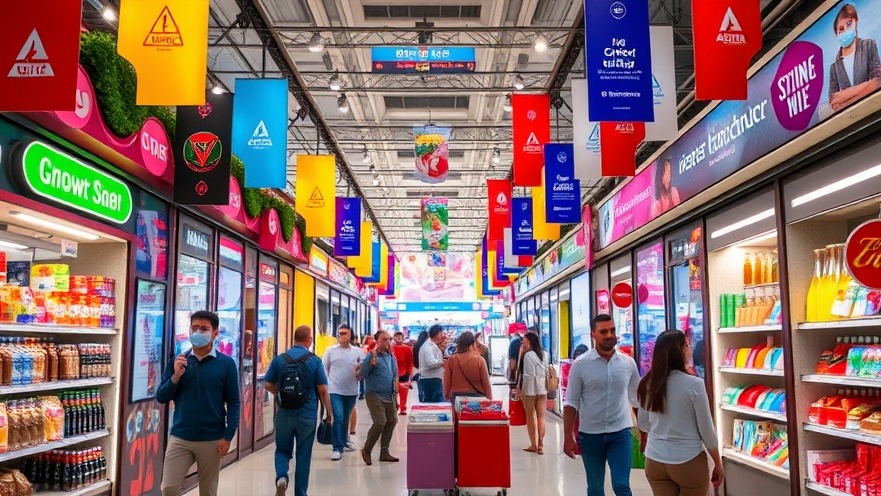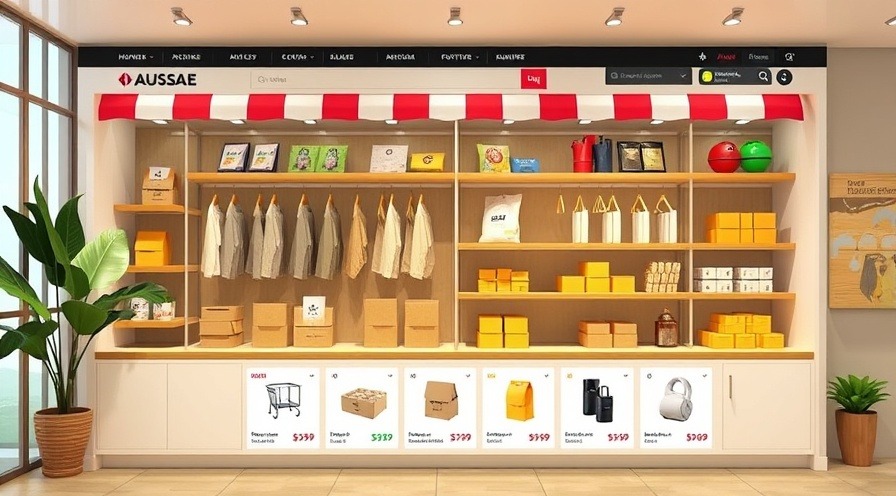
The retail world is entering a decisive new chapter. After years of rapid digital adoption spurred by the pandemic and evolving consumer habits, global e-commerce has firmly established itself as the growth engine of retail. In 2024, online sales are expected to reach $6.9 trillion, and by 2026 that figure is projected to surpass $8.1 trillion, accounting for more than one-fifth of all global retail.
This surge is not merely a continuation of past momentum—it reflects a fundamental reshaping of how people shop, what they buy, and which technologies they use to make those decisions. Electronics, home improvement, and furnishings are at the forefront of this evolution, as consumers grow increasingly comfortable making big-ticket, high-consideration purchases online. At the same time, mobile commerce, omnichannel integration, and AI-driven personalization are blurring the lines between physical and digital retail.
For retailers, brands, and investors, these shifts signal both extraordinary opportunities and new challenges. Winning in the next phase of e-commerce growth will mean understanding not only the headline numbers but also the nuanced drivers: regional variations, sector-specific trends, and rapidly changing consumer expectations around sustainability and convenience.
Global Sales Trajectory: 2024–2026
The numbers tell a story of sustained, transformative growth. Global retail e-commerce sales are forecast to expand from $6.9 trillion in 2024 to over $8.1 trillion by 2026, marking an addition of more than $1.2 trillion in just two years. That level of expansion is remarkable when you consider the base from which the industry is growing—already one of the largest sectors in the global economy.
The pace of growth is moderating compared to the double-digit surges seen during the pandemic years, yet even with this deceleration, the e-commerce sector is projected to maintain high single-digit annual growth. In practical terms, this means the industry is adding hundreds of billions of dollars in new online sales each year, a scale that few other retail channels—or industries overall—can match.
By 2025, e-commerce is expected to represent about 21% of all retail worldwide, up from around 20% in 2024. By 2026, that share will likely climb further, cementing online retail as a mainstream, indispensable component of the consumer economy rather than a supplemental channel. What was once a “digital option” is now, for many consumers, the default way to shop.
This trajectory is not uniform across the globe. Markets such as the United States and Western Europe are advancing steadily at high single-digit growth rates, reflecting maturity and saturation. Meanwhile, emerging economies in Asia, Latin America, and Africa are posting double-digit expansion, showing that e-commerce still has enormous runway where infrastructure, mobile access, and digital payments are catching up.
It is this interplay—between scale in mature markets and speed in emerging ones—that defines the global outlook. The world’s largest players, particularly in China and the U.S., will continue to drive the bulk of transaction volume. But the most dynamic opportunities for expansion, innovation, and disruption are increasingly concentrated in the fast-growing markets that are only now stepping fully into the digital economy.

Industry Segments Leading the Charge
While the overall e-commerce market is climbing into the trillions, the growth is not evenly distributed across categories. Certain industries are emerging as the clear engines of expansion, reshaping consumer expectations in the process. Three stand out as particularly influential over the 2024–2026 horizon: consumer electronics, home improvement, and home furnishings.
Consumer Electronics: The Digital Powerhouse
Consumer electronics remains the undisputed giant of online retail. Annual global e-commerce revenues in this category are approaching $1 trillion, making it one of the largest and most mature digital markets. The appeal is obvious: electronics are high-value purchases that lend themselves to online shopping because consumers can easily compare prices, specifications, and reviews.
Moreover, the constant churn of new product cycles—smartphones, laptops, wearables, and smart-home devices—keeps demand consistently high. The shift toward digital-only product launches (think Apple’s keynote streams or Samsung’s virtual Galaxy Unpacked events) reinforces the online-first nature of the category. Add in the efficiency of global logistics networks and near-instant delivery expectations, and electronics will remain at the top of the e-commerce hierarchy through 2026.
Home Improvement and DIY: From Store Aisles to Online Carts
The home improvement sector—traditionally dominated by big-box retailers and in-store browsing—is undergoing a dramatic digital shift. With online DIY and hardware sales projected to surpass $200 billion by 2025, the category is no longer considered a niche corner of e-commerce.
The pandemic sparked a surge in do-it-yourself projects, and that momentum has carried forward. Both everyday consumers and professional contractors are increasingly sourcing tools, building materials, and renovation supplies online. Retailers such as Home Depot, Lowe’s, and B&Q have expanded their digital catalogs, invested in logistics for bulky goods, and embraced omnichannel models like buy-online-pickup-in-store (BOPIS).
By 2026, home improvement e-commerce will be fueled not just by convenience, but by the integration of technology. Expect AR-enabled product visualizations, AI-guided design tools, and even direct-to-consumer specialty suppliers to continue redefining how consumers shop for their homes.
Home Furnishings and Furniture: Overcoming the “Touch and Feel” Barrier
Perhaps the most striking transformation is happening in furniture and home décor. Once thought to be “showroom-only” purchases, these products are increasingly ordered online. By 2025, global e-commerce sales for furnishings are projected to surpass $220 billion, with steady growth beyond that.
This shift has been enabled by innovations that reduce friction: augmented reality apps allow customers to visualize sofas in their living rooms, virtual showrooms replicate the browsing experience, and improved delivery logistics make it possible to ship bulky items quickly and safely. Flexible return policies and white-glove assembly services further reduce hesitation.
Brands like IKEA, Wayfair, and regional startups are normalizing the idea that major purchases—from couches to dining sets—can be made confidently with just a few taps. For younger, digital-first generations setting up their homes, buying furniture online is already second nature.
The Broader Context
Other categories, such as fashion, grocery, toys, health, and personal care, are all growing steadily online, but electronics and home-related spending stand out for their scale and influence. Together, they not only drive absolute sales growth but also push the boundaries of what consumers believe can and should be purchased online.

Regional Market Dynamics
While the global e-commerce market is expanding as a whole, the shape and pace of that growth vary significantly from one region to another. Understanding these differences is crucial for businesses, as success depends on tailoring strategies to local market conditions, consumer behaviors, and regulatory environments.
China: The Global Titan
China continues to dominate the global e-commerce landscape. With online retail sales exceeding $3.2 trillion in 2024, the country accounts for more than half of the world’s total e-commerce market. Platforms like Alibaba, JD.com, and Pinduoduo are not only facilitating massive transaction volumes but also pioneering new retail models, from live-streamed shopping events to “super apps” that combine payments, social networking, and e-commerce in a single platform.
Growth in China is slowing compared to its double-digit years, reflecting market maturity and broader economic challenges. Still, its scale remains unmatched. Even mid-single-digit growth in China translates into hundreds of billions of dollars in additional online spending—enough to sway global forecasts. For international brands, the Chinese market remains both a massive opportunity and a uniquely competitive battleground.
United States: The Steady Giant
The United States holds the position of the second-largest e-commerce market, with online retail projected to hit $1.25 trillion in 2024. E-commerce now represents about 20% of U.S. retail sales, a share that will continue to grow as omnichannel integration becomes the norm.
Here, giants like Amazon and Walmart are leading, but the U.S. market is also defined by its vibrant ecosystem of niche retailers and direct-to-consumer (D2C) brands powered by platforms such as Shopify. Growth is steady rather than explosive—high single digits annually—but the sheer size of the market ensures that every percentage point equates to significant revenue opportunities. By 2026, U.S. online sales are expected to approach $1.5 trillion, cementing its global role as both a driver of innovation and a benchmark for mature e-commerce markets.
Europe: Mature but Evolving
Europe presents a complex picture. Western Europe is a mature market, posting some of the slowest growth globally (around 6% annually), but still generating substantial volumes. The UK, with e-commerce sales exceeding $220 billion annually, remains Europe’s leader and the world’s third-largest single-country market. Germany, France, and Italy follow, though at smaller scales.
European consumers are distinct in their heightened emphasis on sustainability, data privacy, and cross-border commerce. Many shoppers seek eco-friendly packaging, transparent sourcing, and strong consumer protections. The rise of EU-wide digital commerce regulations, including the Digital Services Act, further differentiates the region. Growth may not match the speed of emerging markets, but Europe is shaping global standards in responsible and secure e-commerce practices.
Emerging Markets: The Next Frontier
The most dynamic growth is unfolding in emerging economies. Latin America leads all regions in growth rate, with e-commerce expanding by nearly 16% in 2024 alone. Countries like Brazil, Mexico, and Argentina are fueling this surge as rising internet penetration and digital payments bring millions of new consumers online. Platforms like MercadoLibre are thriving by tailoring services to regional needs, from local logistics to cash-based payment options.
In Asia outside of China, markets such as India, Indonesia, Vietnam, and the Philippines are on a steep upward curve. India’s e-commerce market is expected to grow at roughly 14% CAGR through 2027, driven by its expanding middle class, smartphone adoption, and digital-first retail strategies. Southeast Asia, with its young population and mobile-first economy, is also poised for double-digit annual growth.
Meanwhile, Africa and the Middle East represent smaller bases today but offer significant potential. Nigeria, South Africa, and Gulf countries are seeing rapid adoption, enabled by mobile money systems and investment in logistics infrastructure. Though these markets may not contribute heavily to global totals by 2026, they are laying the foundation for long-term growth.
Shifting Global Balance
These regional dynamics are reshaping the global balance of e-commerce. Asia-Pacific, led by China and emerging Asian economies, will continue to account for more than 60% of global e-commerce sales. North America and Europe remain critical in scale but will gradually yield share to faster-growing markets in Latin America, South Asia, and Africa. For businesses, this underscores the importance of adopting a dual strategy: consolidating dominance in mature markets while aggressively pursuing new opportunities in emerging ones.
Key Drivers of E-Commerce Growth (2024–2026)
Behind the trillion-dollar growth numbers are powerful structural forces—technologies, business models, and consumer habits—that are reshaping how digital commerce evolves. Between 2024 and 2026, several drivers stand out as central to the next wave of expansion.
Mobile Commerce: Shopping in the Palm of Your Hand
Mobile commerce (m-commerce) is now the dominant channel for online retail, with global sales expected to surpass $2 trillion in 2024. In many emerging economies, smartphones are not just the preferred device—they are the only device for accessing the internet. This mobile-first reality is fueling app-based shopping, one-click payments through digital wallets, and the rise of “super apps” that bundle social, payments, and shopping into one experience. By 2026, mobile is expected to account for well over half of all e-commerce transactions worldwide, making mobile optimization and app-based engagement non-negotiable for retailers.
Logistics and Fulfillment: The Speed Imperative
Consumers now expect fast, reliable, and low-cost delivery as a baseline. This has forced retailers and marketplaces to invest heavily in last-mile logistics, warehouse automation, and supply chain optimization. Same-day or next-day delivery is becoming the standard in urban centers, while creative solutions like lockers, curbside pickup, and even drone delivery are being tested to extend reach. For categories like furniture and groceries—once difficult to fulfill—these innovations are unlocking growth by reducing friction in the delivery process. The strength of a retailer’s logistics network is increasingly a competitive differentiator.
Artificial Intelligence and Personalization
AI has moved from being a “nice to have” to a fundamental engine of e-commerce. Recommendation systems, personalized product feeds, and dynamic pricing algorithms are boosting conversion rates and raising average order values. On the operations side, AI is optimizing inventory management, demand forecasting, and supply chain flows. By 2025, the global AI-in-e-commerce market is expected to reach nearly $9 billion, underscoring its importance not just as a technology trend but as a profit driver. Retailers who harness AI effectively are not only meeting consumer expectations but also lowering costs and improving margins.
Omnichannel and Hybrid Retail Models
The boundary between online and offline is dissolving. Consumers expect to move seamlessly between channels—researching online, buying in store, ordering on an app, or returning via mail—all without friction. Retailers with integrated systems that support buy-online-pickup-in-store (BOPIS), ship-from-store, and real-time inventory visibility are outperforming peers. Live-streamed shopping events, social commerce integrations, and augmented reality tools are also expanding the definition of what “shopping” looks like. The omnichannel consumer is more valuable—shopping more frequently and spending more—making this integration a major driver of revenue growth.
Payments Innovation and Digital Finance
Payments infrastructure is evolving quickly, enabling more consumers to shop online and encouraging larger purchases. The proliferation of digital wallets (PayPal, Apple Pay, Alipay), account-to-account transfers, and buy-now-pay-later (BNPL) options has smoothed the checkout process. In emerging markets, mobile money systems are opening e-commerce to populations previously excluded by low credit card penetration. By 2026, a majority of e-commerce payments are expected to bypass traditional credit cards entirely, relying instead on wallets and alternative finance solutions.
Marketplace Expansion and Global Platforms
Large e-commerce marketplaces—Amazon, Alibaba, MercadoLibre, Shopee—remain the central hubs of global digital commerce. These platforms offer unparalleled product variety and convenience, while also providing small businesses with access to massive audiences through integrated payment, advertising, and fulfillment solutions. Beyond the giants, niche and regional platforms are flourishing by catering to specific demographics or product categories. As cross-border e-commerce grows, marketplaces are becoming the infrastructure of global trade, lowering entry barriers for businesses worldwide.
Evolving Consumer Behavior and Preferences
Beneath the structural forces of technology and logistics lies the human element: how consumers themselves are reshaping the e-commerce landscape. Between 2024 and 2026, two behavioral shifts—toward omnichannel shopping and sustainable consumption—are expected to define the next era of growth.
Omnichannel Shoppers: Navigating Seamlessly Across Touchpoints
For today’s consumer, shopping is no longer a linear experience confined to a single channel. Instead, it unfolds across devices and environments: a product might be discovered on social media, tested in a store, added to a mobile cart, and finally purchased online for home delivery. This blending of online and offline has turned omnichannel into more than a buzzword; it is now the baseline expectation.
Research shows that over three-quarters of consumers use at least three channels in a single purchase journey, and omnichannel shoppers tend to spend more frequently and at higher volumes than single-channel buyers. In response, retailers are racing to integrate inventory systems, unify loyalty programs, and offer services like buy-online-pickup-in-store (BOPIS), curbside pickup, and free cross-channel returns. The message is clear: businesses that fail to deliver a seamless omnichannel experience risk losing their most valuable customers.
The Rise of the Sustainable Shopper
Sustainability has moved from the margins to the mainstream of consumer decision-making. A majority of shoppers—especially younger generations—now consider environmental and ethical factors alongside price and convenience. Surveys show that nearly 80% of U.S. consumers view sustainable living as important, and many are willing to pay a premium of 5–10% for products and services that align with their values.
For e-commerce, this has profound implications. Retailers are rethinking packaging, offering carbon-neutral shipping options, and highlighting eco-friendly product lines. Technology is playing a role as well: AI-driven route optimization reduces emissions in last-mile delivery, while platforms are experimenting with circular economy models such as resale, rental, and recycling programs. The companies that succeed will be those that treat sustainability not as an add-on but as a central value proposition.
Personalization, Social Influence, and Trust
Consumer expectations are also rising in terms of personalization. Shoppers now anticipate product recommendations tailored to their preferences, personalized promotions, and curated browsing experiences. At the same time, the influence of social commerce—purchases driven by social media platforms, influencer endorsements, and live-stream shopping—continues to expand. Platforms like TikTok, Instagram, and YouTube are evolving into direct sales channels, blurring the line between entertainment and shopping.
Yet with personalization comes heightened concern for privacy and security. Data protection, secure payment processes, and transparent communication are becoming hygiene factors—non-negotiable for building and maintaining consumer trust. In this era, trust is currency; brands that demonstrate both personalization and responsibility will stand out.
Challenges and Risks Ahead
Even as global e-commerce scales toward the $8 trillion mark, the road forward is not without obstacles. For retailers, platforms, and investors, understanding these risks is just as important as seizing the opportunities.
Market Saturation in Mature Economies
In regions like the U.S., Western Europe, and increasingly China, e-commerce penetration is reaching natural ceilings. With 20–25% of retail sales already online, growth is shifting from explosive to incremental. Competition is intensifying, and customer acquisition costs are rising as retailers vie for the same pool of digital-first consumers. Standing out will require sharper differentiation, better experiences, and more loyalty-driven strategies.
Regulatory Pressures
Governments are stepping up oversight of digital platforms. Antitrust investigations, stricter data privacy rules, and sustainability mandates are reshaping the landscape. In Europe, regulations like the Digital Services Act and Digital Markets Act are redefining what is permissible in online retail. In the U.S. and China, regulatory scrutiny of marketplace dominance and cross-border trade is also mounting. For companies, compliance is no longer optional—it’s a core part of strategic planning.
Supply Chain Volatility
The global supply chain remains fragile, exposed to geopolitical tensions, climate disruptions, and cost fluctuations in shipping and raw materials. The pandemic revealed the vulnerabilities of “just-in-time” supply models, and while many firms have diversified suppliers and invested in regional hubs, the risk of bottlenecks remains high. Retailers reliant on complex cross-border logistics must plan for resilience as much as efficiency.
Rising Competition and Cost Pressures
The cost of doing business online is climbing. Logistics investments, digital advertising spend, and customer acquisition campaigns are eating into margins. On platforms like Amazon or Alibaba, sellers face increasing pressure from both fees and competition, while D2C brands are finding it harder to cut through the noise without significant marketing budgets. Profitability, rather than growth alone, is becoming the key metric investors scrutinize.
Consumer Trust and Cybersecurity
As transactions multiply, so do risks around data breaches, fraud, and cyberattacks. Consumers expect secure, frictionless shopping experiences, and any lapse can erode trust instantly. The more retailers personalize and integrate consumer data into AI systems, the greater the responsibility to safeguard that data. Trust, once lost, is difficult to rebuild.
Conclusion: The Future of Digital Commerce
Global e-commerce is on track to surpass $8.1 trillion by 2026, a figure that underscores not just the power of digital retail but its permanence in the fabric of global commerce. Electronics, home improvement, and home furnishings will anchor much of this growth, demonstrating that even big-ticket, traditionally in-store categories are now thriving online.
But the story of e-commerce is not only about rising numbers. It is also about transformation. Mobile commerce, AI-driven personalization, and omnichannel retail are redefining what shopping looks like, while sustainability expectations and social commerce are reshaping what consumers value in the brands they choose.
The risks are real—saturation in mature markets, regulatory scrutiny, supply chain volatility, and rising costs. Yet these challenges are also catalysts, pushing the industry toward greater resilience, innovation, and responsibility. The companies that adapt quickly, localize effectively, and put consumer trust and sustainability at the heart of their strategies will not just survive—they will lead.
By 2026, online shopping will no longer be framed as an alternative to physical retail. Instead, it will be seen as the primary engine of global retail growth, seamlessly integrated into every stage of the consumer journey. The question is no longer whether e-commerce will dominate, but how companies will position themselves in this increasingly digital-first world.
Global E-Commerce Sales Forecasts
Statista / Shopify – Global e-commerce sales forecast to 2028
https://www.shopify.com/research/global-ecommerce-statisticsInsider Intelligence / eMarketer – Worldwide Retail E-commerce Sales Forecast 2023–2027
https://www.insiderintelligence.com/content/global-ecommerce-forecast-2023
Regional Market Data
eMarketer – China, US, and UK as the top three e-commerce markets
https://www.emarketer.com/content/global-ecommerce-forecast-2024U.S. Department of Commerce – E-commerce country guide: India and global insights
https://www.trade.gov/country-commercial-guides/india-ecommerce
Industry Segments & Categories
Statista – Retail e-commerce sales worldwide by product category
https://www.statista.com/statistics/379046/worldwide-retail-e-commerce-sales-by-product-category/Shopify – Top e-commerce categories (fashion, electronics, furnishings, food, etc.)
https://www.shopify.com/research/global-ecommerce-statistics#categories
Growth Drivers
Shopify – Mobile commerce and digital wallet adoption
https://www.shopify.com/research/global-ecommerce-statistics#mobileFortune Business Insights – AI in e-commerce market size & forecast
https://www.fortunebusinessinsights.com/industry-reports/artificial-intelligence-ai-in-retail-market-101671McKinsey & Company – Omnichannel retail and consumer behavior insights
https://www.mckinsey.com/capabilities/growth-marketing-and-sales/our-insights/the-state-of-grocery-retail-2023-the-omnichannel-imperative
Consumer Behavior & Sustainability
NielsenIQ – Sustainable shoppers and their willingness to pay more
https://nielseniq.com/global/en/insights/analysis/2023/consumer-trends-in-sustainability/IBM Institute for Business Value – Sustainability and consumer shopping habits
https://www.ibm.com/thought-leadership/institute-business-value/report/sustainable-shoppingHarvard Business Review – Omnichannel customer experience and value
https://hbr.org/2017/01/a-study-of-46000-shoppers-shows-that-omnichannel-retailing-works
 Add Row
Add Row  Add
Add 



Write A Comment